Brain Wearables: Validation Toolkit for Ear-Level EEG Sensors
Abstract
1. Introduction
- A software framework (“EaR-P Lab”) that allows the user to readily make a validation test battery for the characterization of ear-EEG devices at the neural signal acquisition level.
- The design and prototyping of an ear-EEG-suitable physical phantom for systematic characterization of in-ear sensors, allowing controlled comparison of fit form factors for ear-EEG acquisition.
2. Materials and Methods: Ear-EEG Toolkit Design and Validation
2.1. EaR-P Lab—Design and Validation
2.1.1. GUI—Main Menu
2.1.2. Stimuli and Trigger Latency
2.1.3. Data Acquisition and Test Battery
- Resting State: 4 min of resting-state EEG recording (Figure A1)
- Alpha Block: 4 min of eyes open/closed, 1 min per block (Figure A3)
- ASSR: 4 min of continuous auditory stimulation, 1 kHz carrier signal with 40 Hz amplitude modulation (Figure A1)
- SSVEP: 4 min of continuous visual stimulation, 10 Hz flickering radial checkerboard, subjects seated at a distance of 60 cm from the center of the screen with room lights turned off (Figure A2)
- AEP: 200 trials of discrete auditory events, 1 kHz pure tone of 200 ms duration with 10 ms rise/fall time, interstimulus interval (ISI) between 1200 and 1800 ms, total duration of 7–8 min (Figure A4)
- VEP: 200 trials of discrete visual events, pattern-reversal radial checkerboard of 500 ms with 500 ms ISI, total duration of 5 min (Figure A5)
- AEP OddBall: 200 trials of discrete standard/deviant auditory events (standard: 440 Hz pure tone; deviant: 880 Hz pure tone), 100 ms duration with 10 ms rise/fall time and 1200–1800 ms ISI, total duration of about 15 min
- VEP OddBall: 200 trials of discrete standard/target visual events (standard: blue square; target: red circle), 500 ms duration with 600–700 ms ISI, total duration of about 18 min, subjects instructed to respond to target with button press (Figure A6)
- EOG: 80 trials of discrete visual events, 500 ms duration dot movements with 1000–1600 ms ISI, total duration of about 10 min, subjects seated at a distance of 30 cm from the center of the screen (i.e., visual angle of 16.2°); subject’s head was stabilized using an adjustable chin rest and the monitor was centered with the subject’s eyes (Figure A7).
2.1.4. Data Processing and Statistical Analysis
2.1.5. EaR-P Lab Validation
- Alpha Block
- ASSR
- SSVEP
- AEP
- VEP
- AEP OddBall (MMN)
- VEP OddBall (P300)
- EOG (Blinks and Saccades)
2.2. Ear-EEG Phantom—Design and Validation
2.2.1. Phantom Assembly and Bulk Materials
- Agar
- Boil 700 mL of regular tap water (or deionized water)
- Add 30 g of agar slowly while stirring the mixture
- Add 4 g of table salt while stirring until no granules are present (keep mixing while letting it cool down at room temperature for 10 min)
- Pour the mix into the assembled phantom through the top vents until the liquid reaches half the vent’s height and let it sit in a refrigerator until it fully solidifies (minimum 2 h, preferably overnight)
- Ballistic Gelatin (BG)
- Carbon Fiber-Doped Silicone (CF)
- Chopped carbon fibers, 3 mm in length, €30.00 for 500 g from Amazon
- Two-part A/B system platinum-curable silicone, mixing ratio of 1:1, €23.00 for 630 mL from Amazon (two were required for the phantom)
- Measure 8 g of carbon fibers into a disposable cup (use a mask and gloves when handling carbon fibers)
- Wet the carbon fibers with a small amount of rubbing alcohol, spread them around, and let it almost entirely evaporate (to release strands of hair that surround the carbon fibers)
- Add the carbon fibers to 350 mL of part A silicone and mix thoroughly until the mix presents a grey/blueish tint (an electric mixer with a wider spatula attachment was used)
- Add 350 mL of part B silicone and keep mixing for up to 25 min until it reaches the same tint
- Pour into the phantom casing equally through each vent and let cure for 6 h.
2.2.2. Ear-EEG Phantom Testing Protocol and Setup
2.2.3. Phantom Integrity and Durability
2.2.4. Electrode Impedance
2.2.5. Noise Floor Measurements
2.2.6. Alpha-Wave Simulation
3. Results: Toolkit Use Case: Validation of an Ear-EEG Sensor
3.1. Ear-EEG Devices and Setup
- Cz: standard central scalp reference
- T8: scalp reference closer to the ear
- ER3: within-ear reference (e.g., relative to ER8) and between-ear reference (e.g., relative to EL8).
3.2. EaR-P Lab for Ear-EEG Validation
3.2.1. Alpha Block
3.2.2. ASSR
3.2.3. SSVEP
3.2.4. AEP
3.2.5. VEP
3.2.6. AEP OddBall (MMN)
3.2.7. VEP OddBall (P300)
3.2.8. EOG (Blinks and Saccades)
3.3. Reassessment of Dry Ear-EEG ASSR Data
4. Discussion
5. Conclusions
Author Contributions
Funding
Institutional Review Board Statement
Informed Consent Statement
Data Availability Statement
Acknowledgments
Conflicts of Interest
Abbreviations
| EEG | Electroencephalography |
| BCI | Brain–Computer Interface |
| ERP | Event-Related Potential |
| ASSR | Auditory Steady-State Response |
| SSVEP | Steady-State Visual Evoked Potential |
| AEP | Auditory Evoked Potential |
| VEP | Visual Evoked Potential |
| MMN | Mismatch Negativity |
| EOG | Electro-Oculography |
| ISI | Interstimulus Interval |
| BG | Ballistic Gelatin |
| CF | Carbon Fibers |
Appendix A. EaR-P Lab Paradigms and Settings
- Resting State

- Auditory Steady-State Response (ASSR)
- Steady-State Visual Evoked Potential (SSVEP)

- Alpha Block

- Auditory Evoked Potential (AEP)

- Visual Evoked Potential (VEP)

- OddBall Paradigms

- Electro-Oculography (EOG)

- Settings Menu

- Markers Menu

Appendix B. Ear-EEG Phantom Dimensions
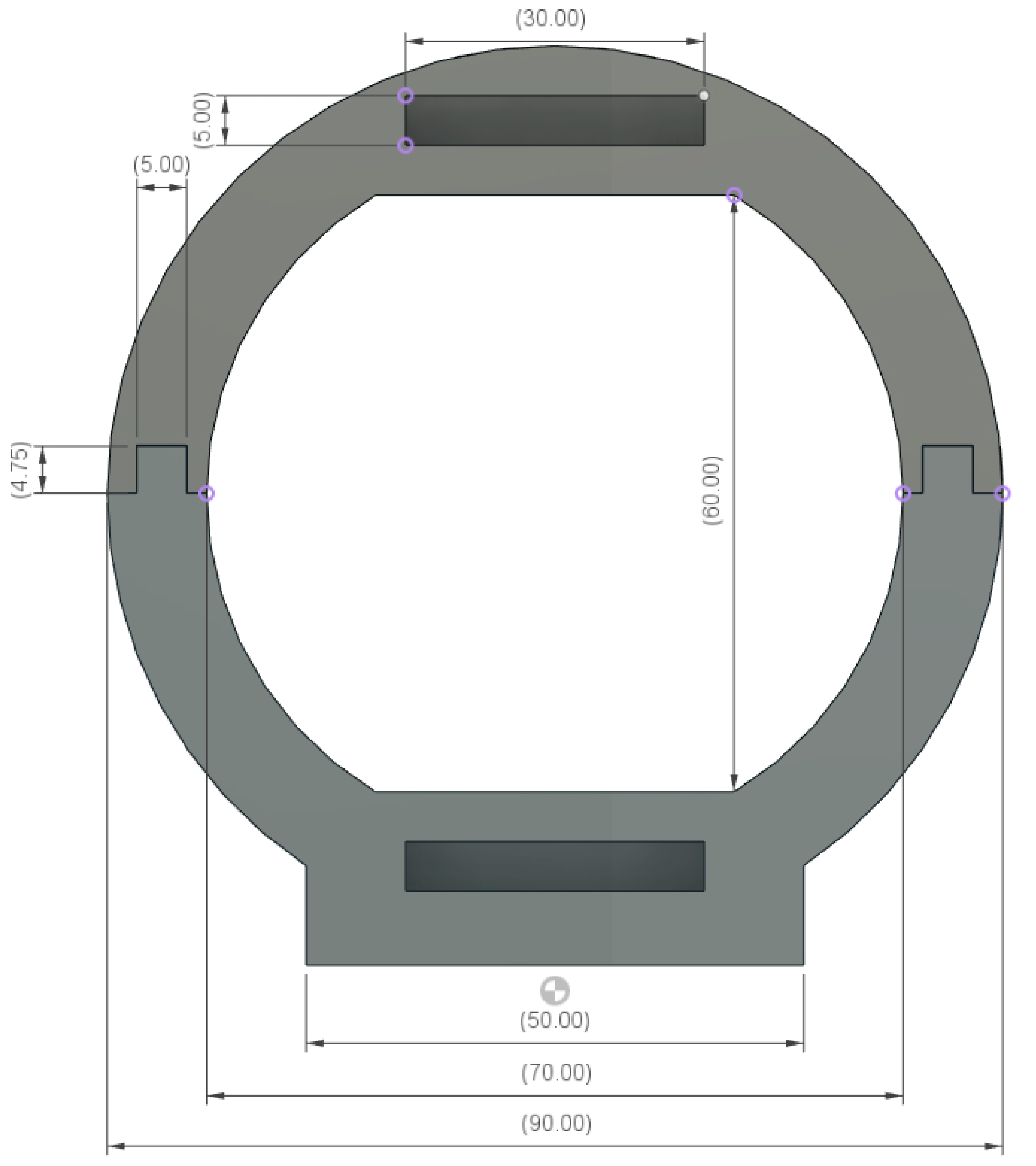
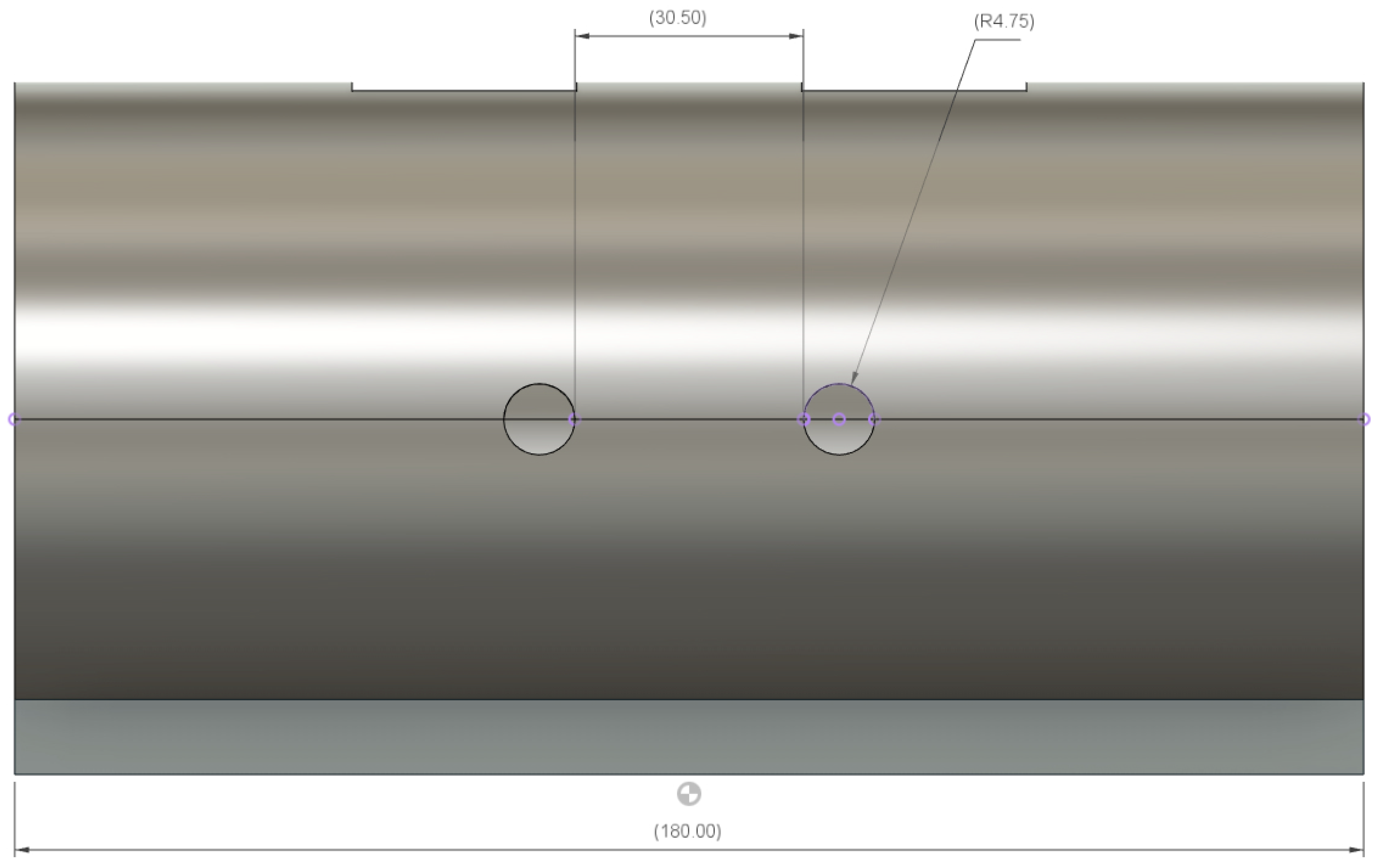


References
- Casson, A.; Yates, D.; Smith, S.; Duncan, J.; Rodriguez-Villegas, E. Wearable Electroencephalography. IEEE Eng. Med. Biol. Mag. 2010, 29, 44–56. [Google Scholar] [CrossRef] [PubMed]
- Casson, A.J. Wearable EEG and beyond. Biomed. Eng. Lett. 2019, 9, 53–71. [Google Scholar] [CrossRef]
- Soufineyestani, M.; Dowling, D.; Khan, A. Electroencephalography (EEG) Technology Applications and Available Devices. Appl. Sci. 2020, 10, 7453. [Google Scholar] [CrossRef]
- Looney, D.; Kidmose, P.; Park, C.; Ungstrup, M.; Rank, M.; Rosenkranz, K.; Mandic, D. The In-the-Ear Recording Concept: User-Centered and Wearable Brain Monitoring. IEEE Pulse 2012, 3, 32–42. [Google Scholar] [CrossRef]
- Wyckoff, S.N.; Sherlin, L.H.; Ford, N.L.; Dalke, D. Validation of a wireless dry electrode system for electroencephalography. J. Neuroeng. Rehabil. 2015, 12, 95. [Google Scholar] [CrossRef]
- What Are Imaging Phantoms? Available online: https://www.nist.gov/physics/what-are-imaging-phantoms (accessed on 11 December 2023).
- Hairston, W.D.; Slipher, G.A.; Yu, A.B. Ballistic gelatin as a putative substrate for EEG phantom devices. arXiv 2016, arXiv:1609.07691. [Google Scholar] [CrossRef]
- Richer, N.; Downey, R.J.; Nordin, A.D.; Hairston, W.D.; Ferris, D.P. Adding neck muscle activity to a head phantom device to validate mobile EEG muscle and motion artifact removal. In Proceedings of the 2019 9th International IEEE/EMBS Conference on Neural Engineering (NER), San Francisco, CA, USA, 20–23 March 2019; pp. 275–278. [Google Scholar] [CrossRef]
- Chowdhury, M.E.; Khandakar, A.; Hossain, B.; Alzoubi, K. Effects of the phantom shape on the gradient artefact of electroencephalography (EEG) data in simultaneous EEG-fMRI. Appl. Sci. 2018, 8, 1969. [Google Scholar] [CrossRef]
- Audette, W.E.; Allen, L.V. Design and Demonstration of a Head Phantom for Testing of Electroencephalography (EEG) Equipment Hearing Protection View Project DPOAE Level and Phase Mapping View Project; Creare, Inc.: Hannover, Germany, 2020. [Google Scholar] [CrossRef]
- Wood, S.; Martins, T.; Ibrahim, T.S. How to design and construct a 3D-printed human head phantom. J. 3D Print. Med. 2019, 3, 119–125. [Google Scholar] [CrossRef]
- Marathe, A.R.; Ries, A.J.; McDowell, K. Sliding HDCA: Single-trial eeg classification to overcome and quantify temporal variability. IEEE Trans. Neural Syst. Rehabil. Eng. 2014, 22, 201–211. [Google Scholar] [CrossRef]
- Politte, D.; Prior, F.; Ponton, C.; Nolan, T.; Larson-Prior, L. Sources of non-physiologic noise in simultaneous EEG-fMRI data: A phantom study. In Proceedings of the 2010 Annual International Conference of the IEEE Engineering in Medicine and Biology, Buenos Aires, Argentina, 31 August–4 September 2010; pp. 5129–5132. [Google Scholar] [CrossRef]
- Nordin, A.D.; Hairston, W.D.; Ferris, D.P. Dual-electrode motion artifact cancellation for mobile electroencephalography. J. Neural Eng. 2018, 15, 056024. [Google Scholar] [CrossRef]
- Kuratko, D.; Lacik, J.; Koudelka, V.; Vejmola, C.; Wojcik, D.K.; Raida, Z. Forward Model of Rat Electroencephalogram: Comparative Study of Numerical Simulations With Measurements on Rat Head Phantoms. IEEE Access 2022, 10, 92023–92035. [Google Scholar] [CrossRef]
- Owda, A.Y.; Casson, A.J. Investigating Gelatine Based Head Phantoms for Electroencephalography Compared to Electrical and Ex Vivo Porcine Skin Models. IEEE Access 2021, 9, 96722–96738. [Google Scholar] [CrossRef]
- Velcescu, A.; Lindley, A.; Cursio, C.; Krachunov, S.; Beach, C.; Brown, C.A.; Jones, A.K.; Casson, A.J. Flexible 3D -printed EEG electrodes. Sensors 2019, 19, 1650. [Google Scholar] [CrossRef] [PubMed]
- Kaveh, R.; Doong, J.; Zhou, A.; Schwendeman, C.; Gopalan, K.; Burghardt, F.L.; Arias, A.C.; Maharbiz, M.M.; Muller, R. Wireless User-Generic Ear EEG. IEEE Trans. Biomed. Circuits Syst. 2020, 14, 727–737. [Google Scholar] [CrossRef] [PubMed]
- Kappel, S.L.; Rank, M.L.; Toft, H.O.; Andersen, M.; Kidmose, P. Dry-Contact Electrode Ear-EEG. IEEE Trans. Biomed. Eng. 2019, 66, 150–158. [Google Scholar] [CrossRef] [PubMed]
- Kaongoen, N.; Choi, J.; Choi, J.W.; Kwon, H.; Hwang, C.; Hwang, G.; Kim, B.H.; Jo, S. The future of wearable EEG: A review of ear-EEG technology and its applications. J. Neural Eng. 2023, 20, 051002. [Google Scholar] [CrossRef] [PubMed]
- Röddiger, T.; Clarke, C.; Breitling, P.; Schneegans, T.; Zhao, H.; Gellersen, H.; Beigl, M. Sensing with Earables: A Systematic Literature Review and Taxonomy of Phenomena. Proc. ACM Interact. Mob. Wearable Ubiquitous Technol. 2022, 6, 1–57. [Google Scholar] [CrossRef]
- Peirce, J.; Gray, J.R.; Simpson, S.; ad Richard Höchenberger, M.M.; Sogo, H.; Kastman, E.; Lindeløv, J.K. PsychoPy2: Experiments in behavior made easy. Behav. Res. Methods 2019, 51, 195–203. [Google Scholar] [CrossRef]
- Kothe, C.; Medine, D.; Boulay, C.; Grivich, M.; Stenner, T. Lab Streaming Layer Open Source Repository. Available online: https://github.com/sccn/labstreaminglayer (accessed on 3 March 2023).
- Razavi, M.; Yamauchi, T.; Janfaza, V.; Leontyev, A.; Longmire-Monford, S.; Orr, J. Multimodal-Multisensory Experiments. Preprints 2020, 2020080614. [Google Scholar] [CrossRef]
- Bridges, D.; Pitiot, A.; MacAskill, M.R.; Peirce, J.W. The timing mega-study: Comparing a range of experiment generators, both lab-based and online. PeerJ 2020, 8, e9414. [Google Scholar] [CrossRef]
- Can PsychoPy Deliver Millisecond Precision. Available online: https://www.psychopy.org/general/timing/millisecondPrecision (accessed on 11 December 2023).
- Bishop, D.V.M.; Hardiman, M.J. Measurement of mismatch negativity in individuals: A study using single-trial analysis. Psychophysiology 2010, 47, 697–705. [Google Scholar] [CrossRef] [PubMed]
- Goverdovsky, V.; Looney, D.; Kidmose, P.; Mandic, D.P. In-Ear EEG From Viscoelastic Generic Earpieces: Robust and Unobtrusive 24/7 Monitoring. IEEE Sens. J. 2016, 16, 271–277. [Google Scholar] [CrossRef]
- Saleem, A.; Frormann, L.; Soever, A. Fabrication of extrinsically conductive silicone rubbers with high elasticity and analysis of their mechanical and electrical characteristics. Polymers 2010, 2, 200–210. [Google Scholar] [CrossRef]
- SILC Circuits: High Performance Conductive Silicone. Available online: https://www.instructables.com/Silc-Circuits-High-Performance-Conductive-Silicone/ (accessed on 11 December 2023).
- OpenBCI EEG Setup. Available online: https://docs.openbci.com/GettingStarted/Biosensing-Setups/EEGSetup/ (accessed on 11 December 2023).
- McCann, H.; Pisano, G.; Beltrachini, L. Variation in reported human head tissue electrical conductivity values. Brain Topogr. 2019, 32, 825–858. [Google Scholar] [CrossRef] [PubMed]
- Koessler, L.; Colnat-Coulbois, S.; Cecchin, T.; Hofmanis, J.; Dmochowski, J.P.; Norcia, A.M.; Maillard, L.G. In-vivo measurements of human brain tissue conductivity using focal electrical current injection through intracerebral multicontact electrodes. Hum. Brain Mapp. 2016, 38, 974–986. [Google Scholar] [CrossRef] [PubMed]
- Mikkelsen, K.B.; Kappel, S.L.; Mandic, D.P.; Kidmose, P. EEG Recorded from the Ear: Characterizing the Ear-EEG Method. Front. Neurosci. 2015, 9, 438. [Google Scholar] [CrossRef]
- Oliveira, A.S.; Schlink, B.R.; Hairston, W.D.; König, P.; Ferris, D.P. Induction and separation of motion artifacts in EEG data using a mobile phantom head device. J. Neural Eng. 2016, 13, 036014. [Google Scholar] [CrossRef]
- Vanderwal, T.; Kelly, C.; Eilbott, J.; Mayes, L.C.; Castellanos, F.X. Inscapes: A movie paradigm to improve compliance in functional magnetic resonance imaging. NeuroImage 2015, 122, 222–232. [Google Scholar] [CrossRef]
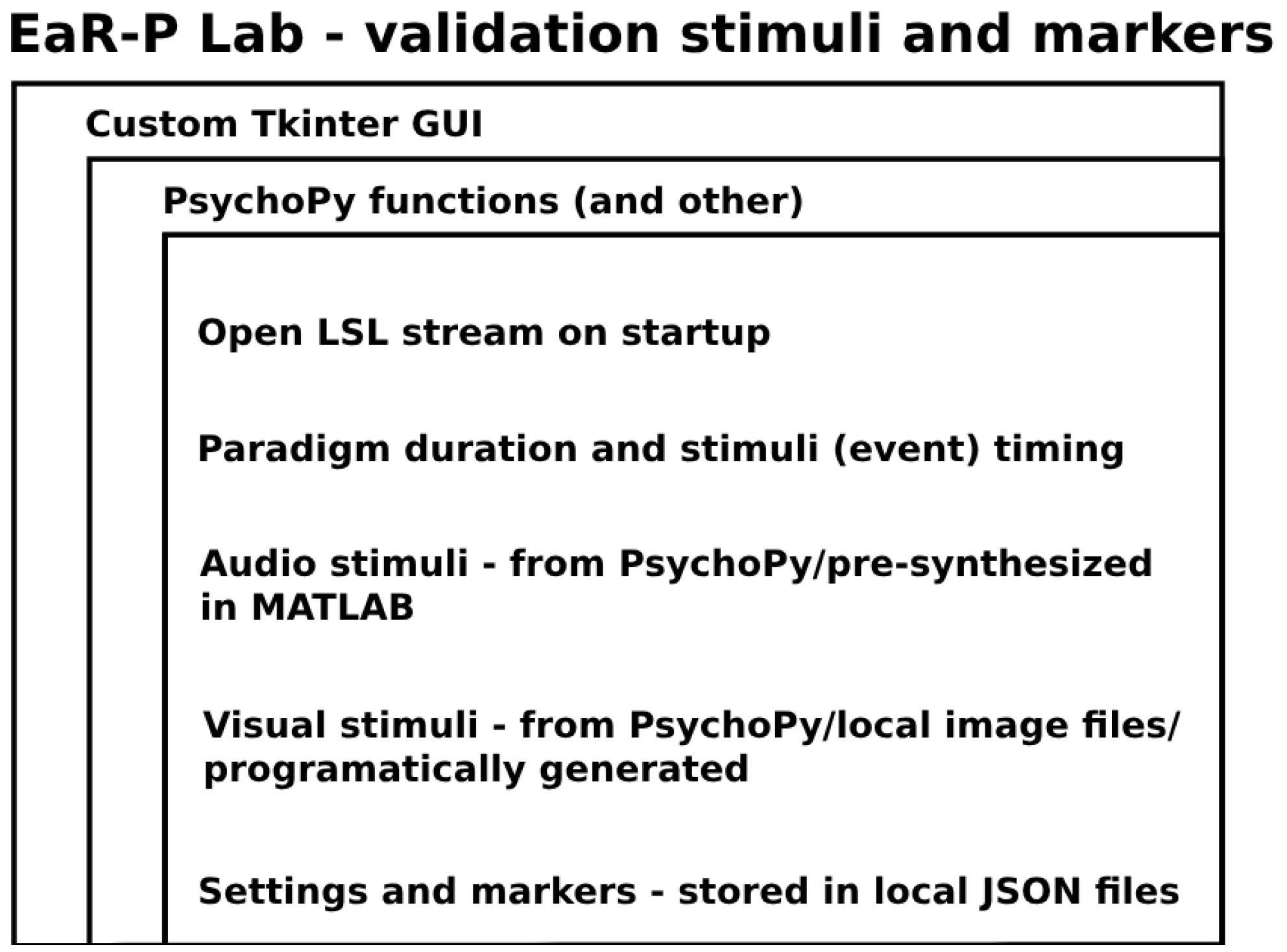
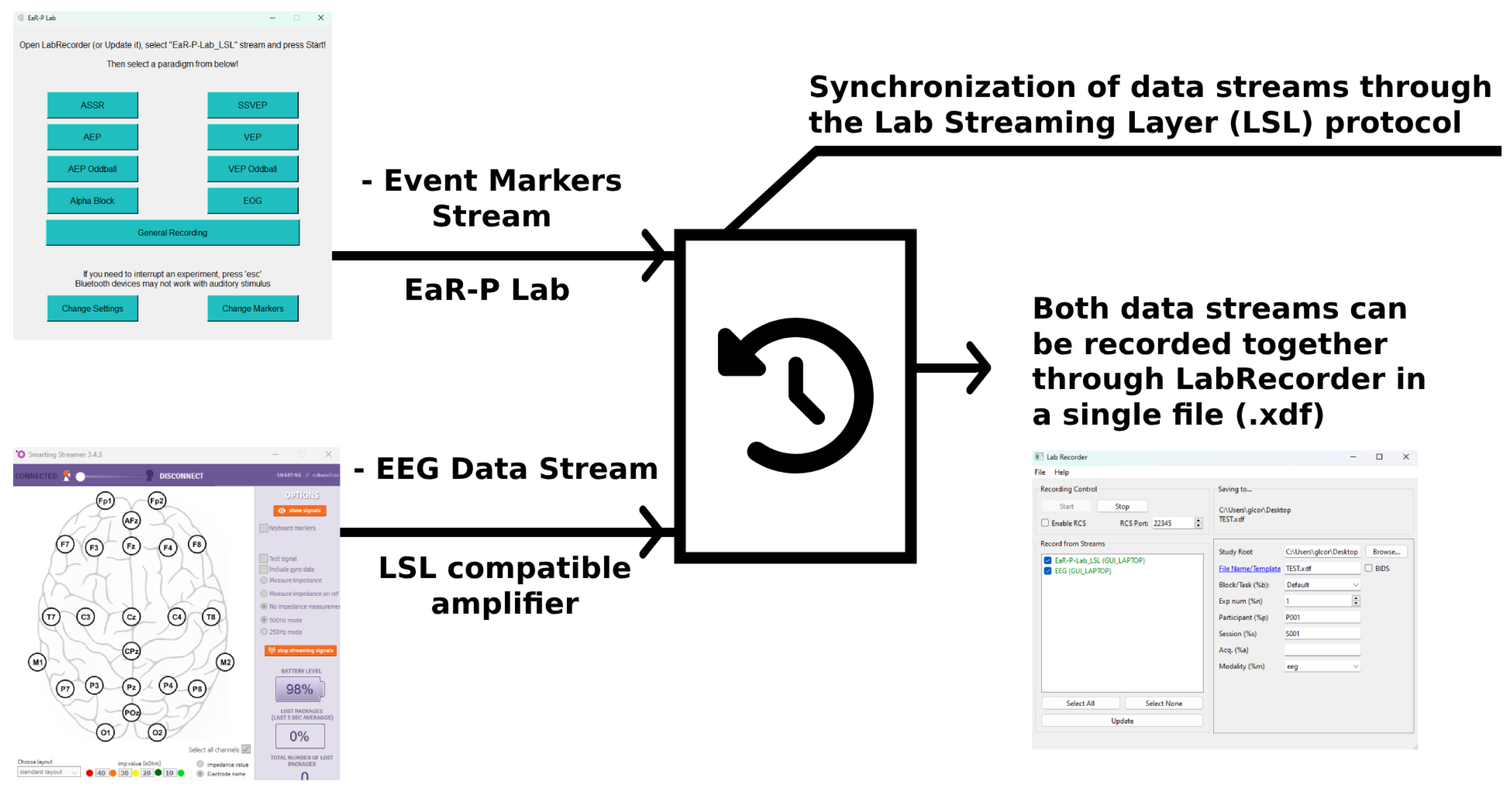
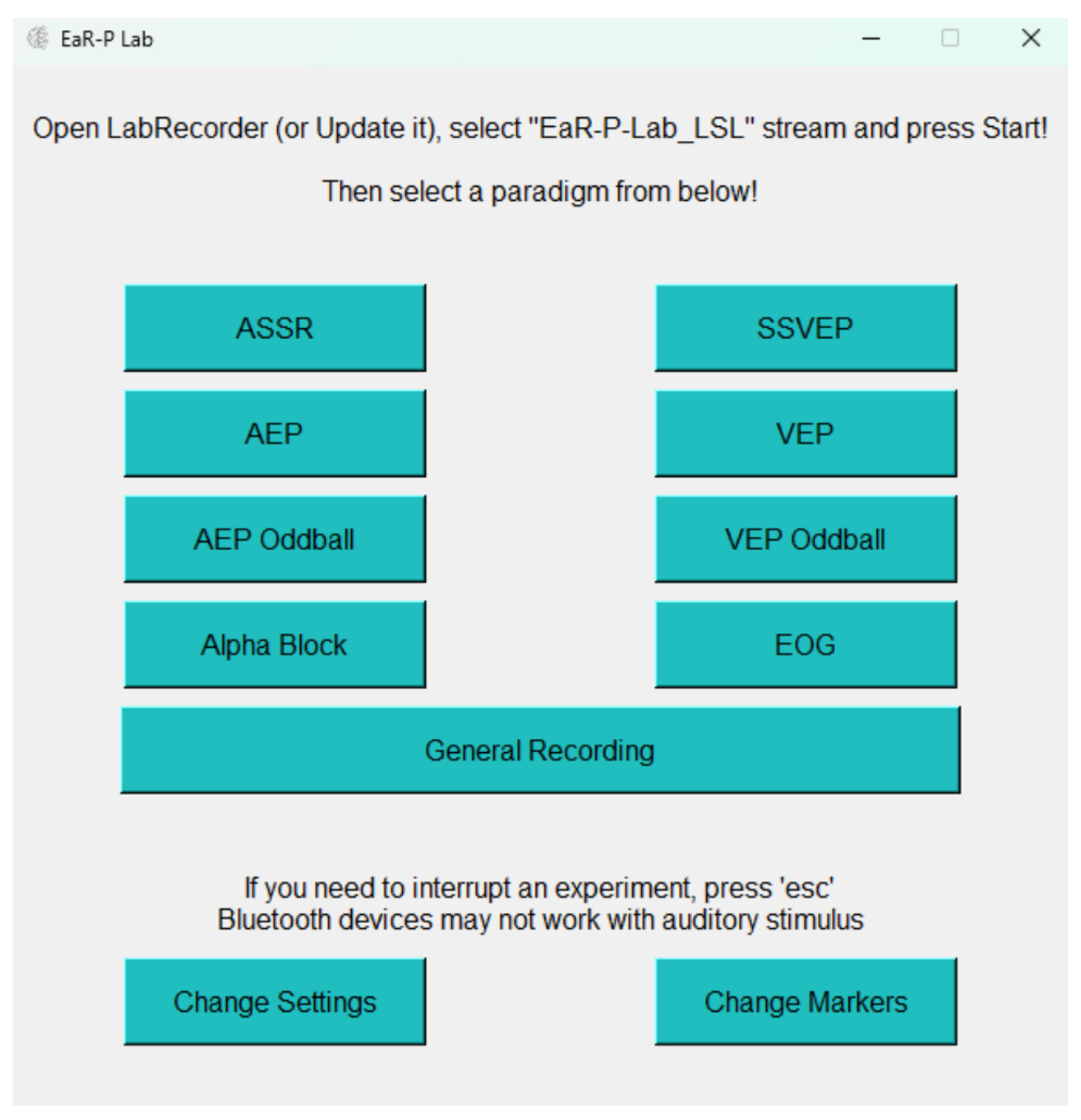

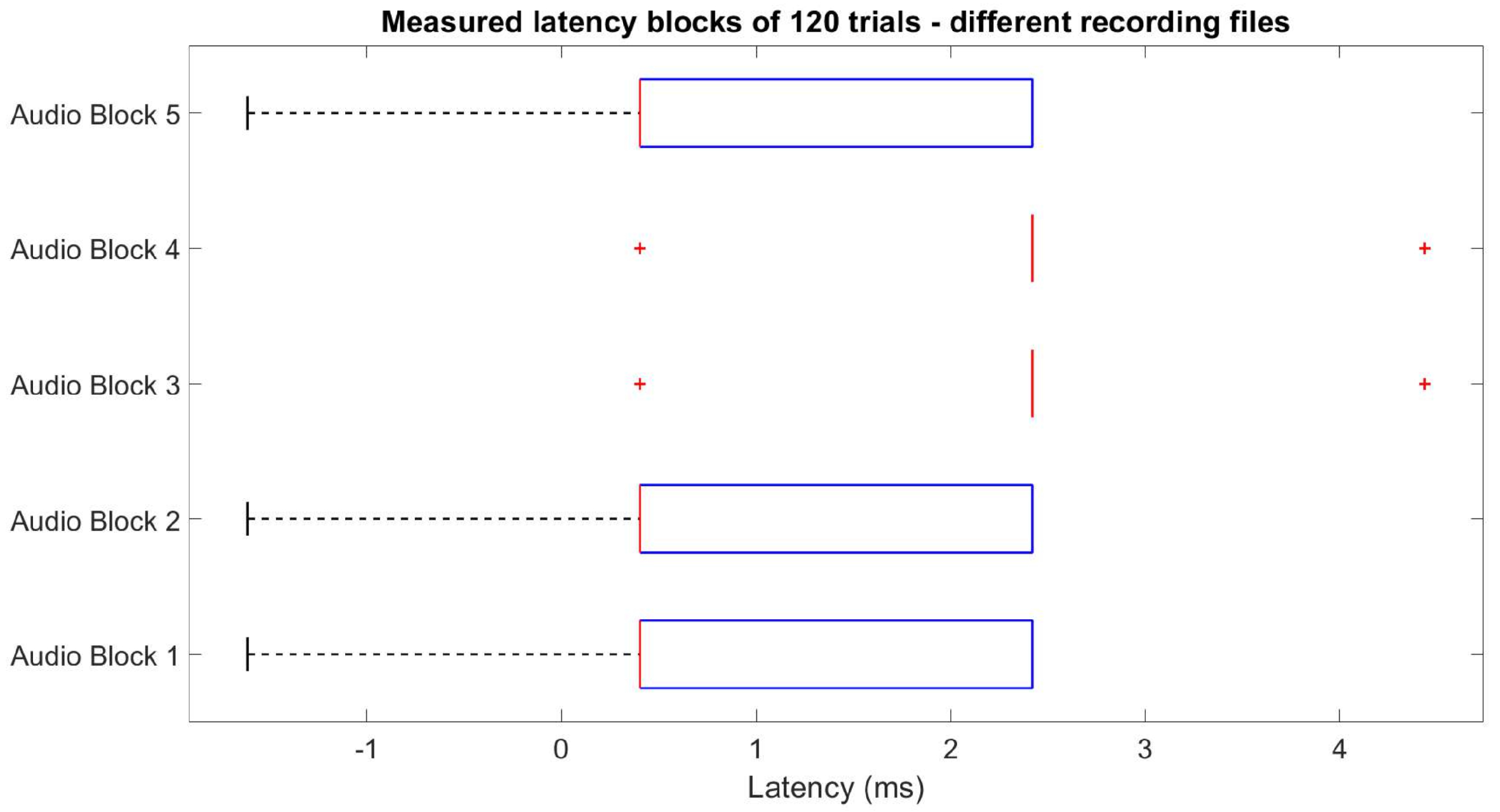
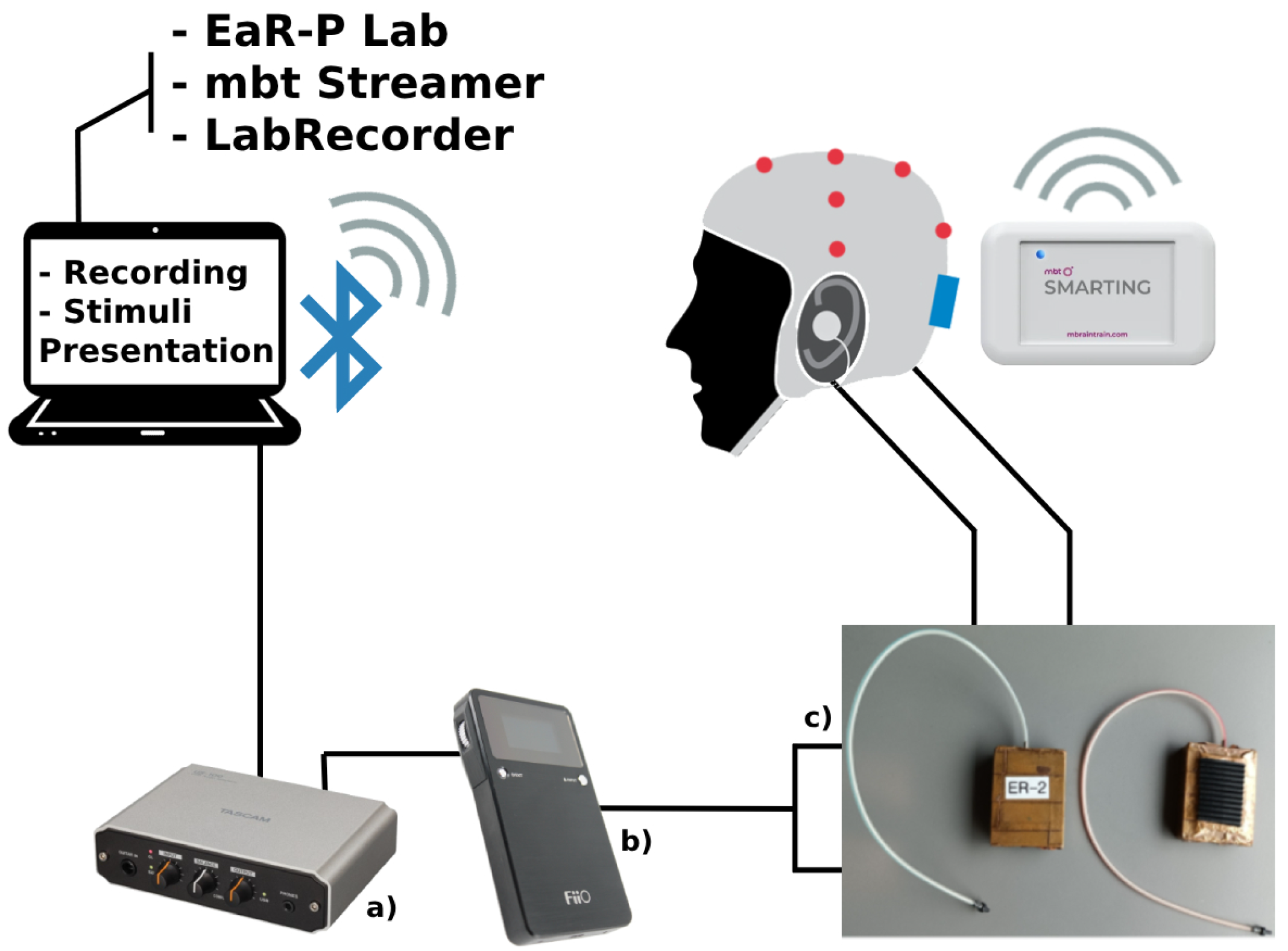
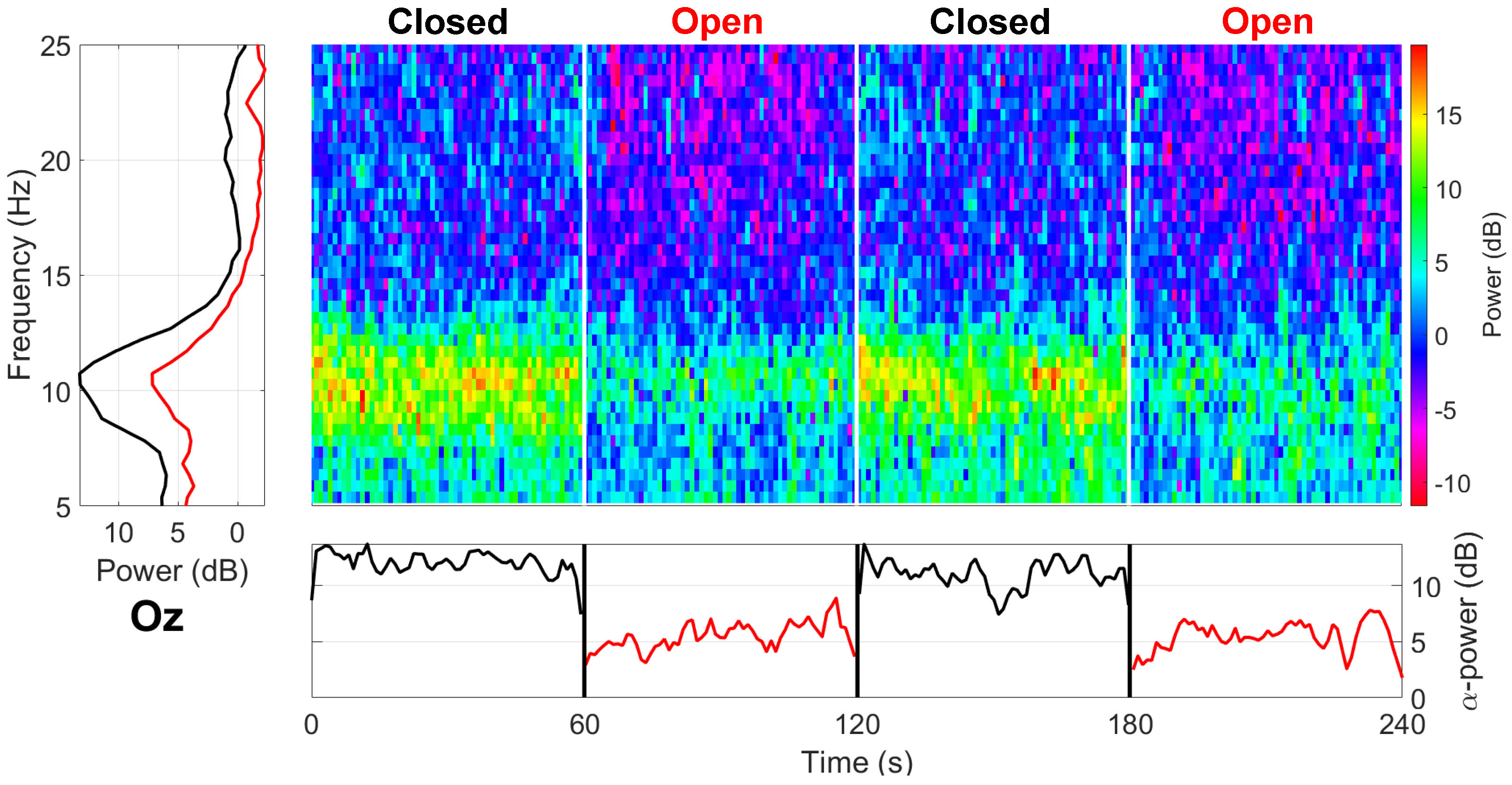


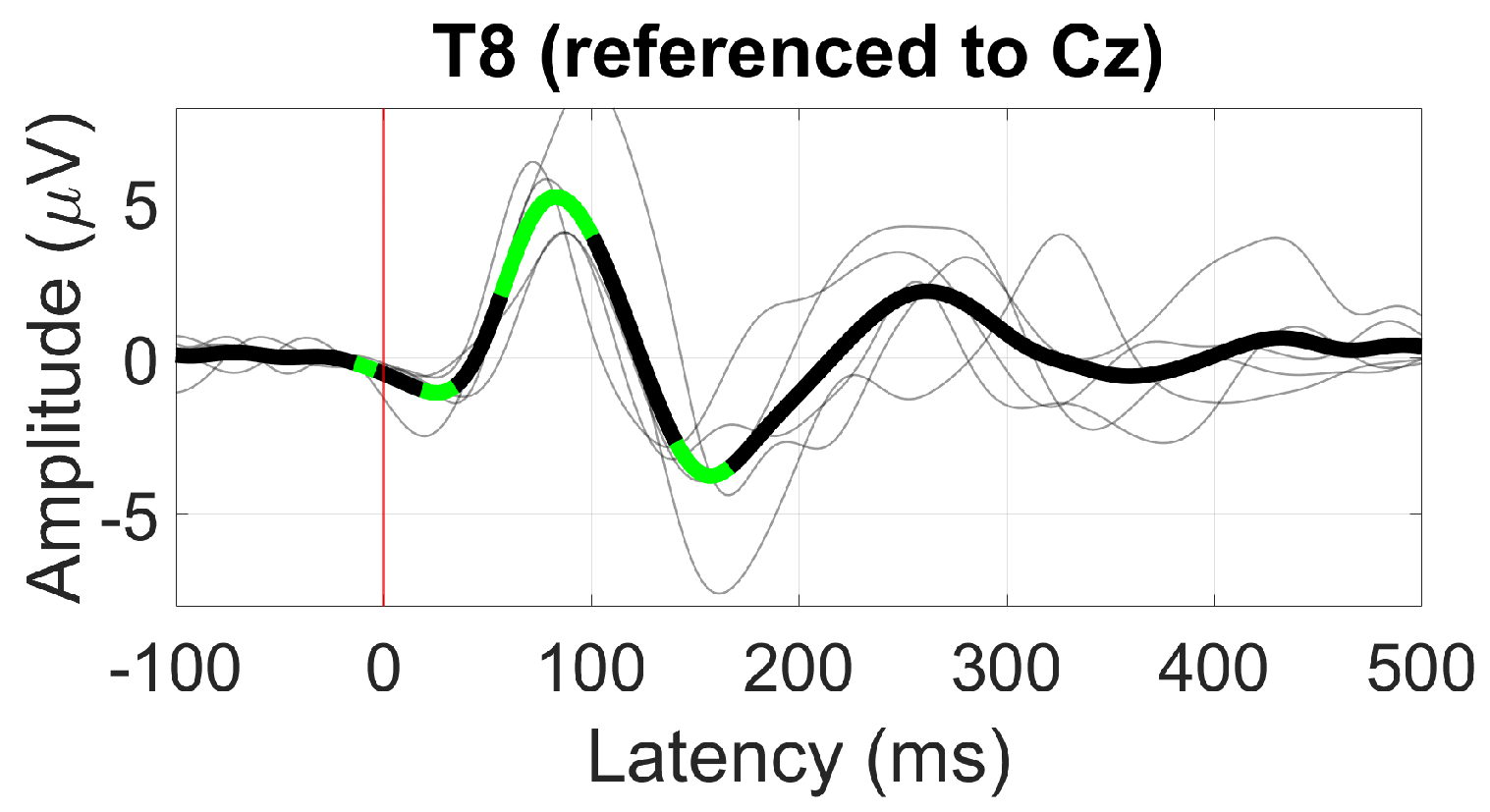









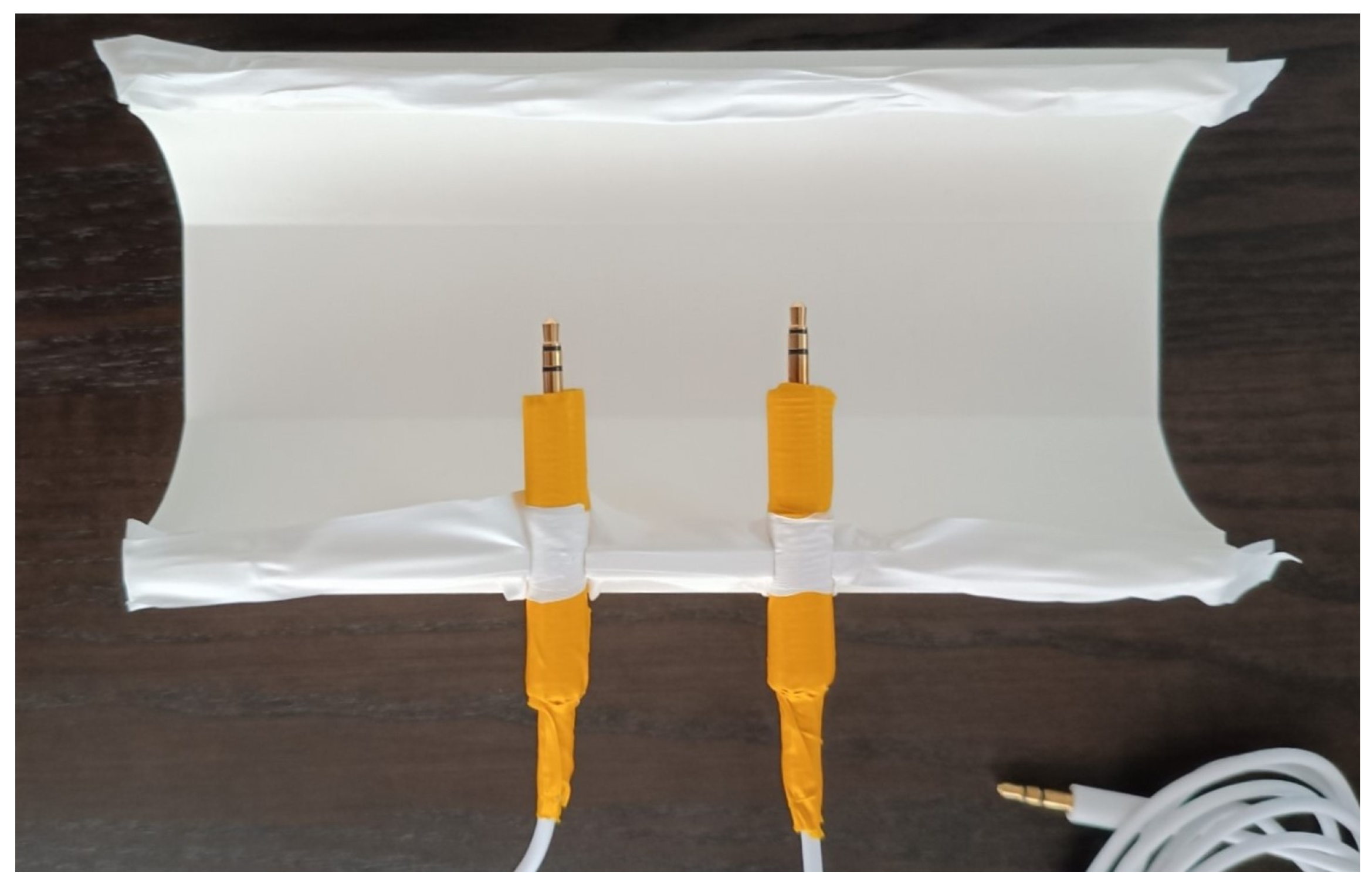

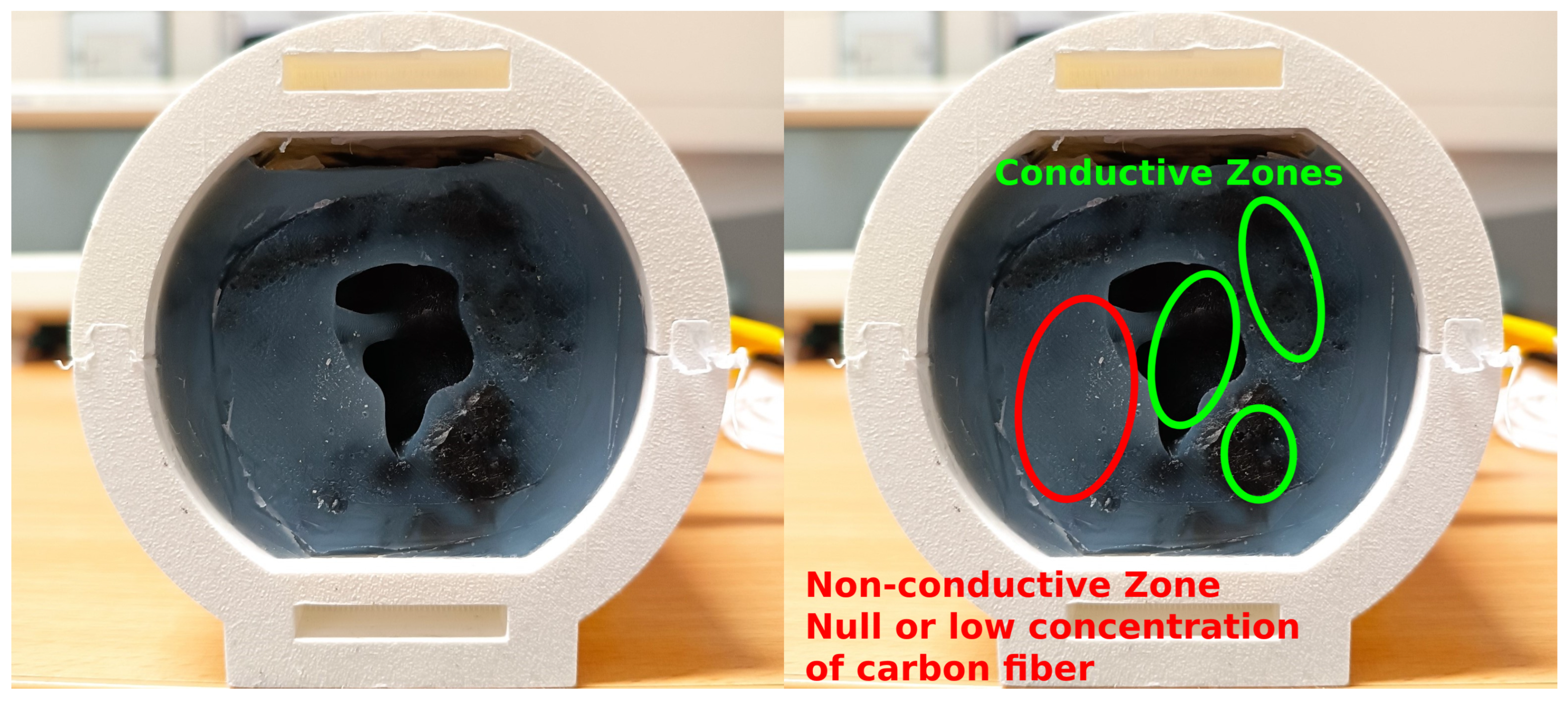

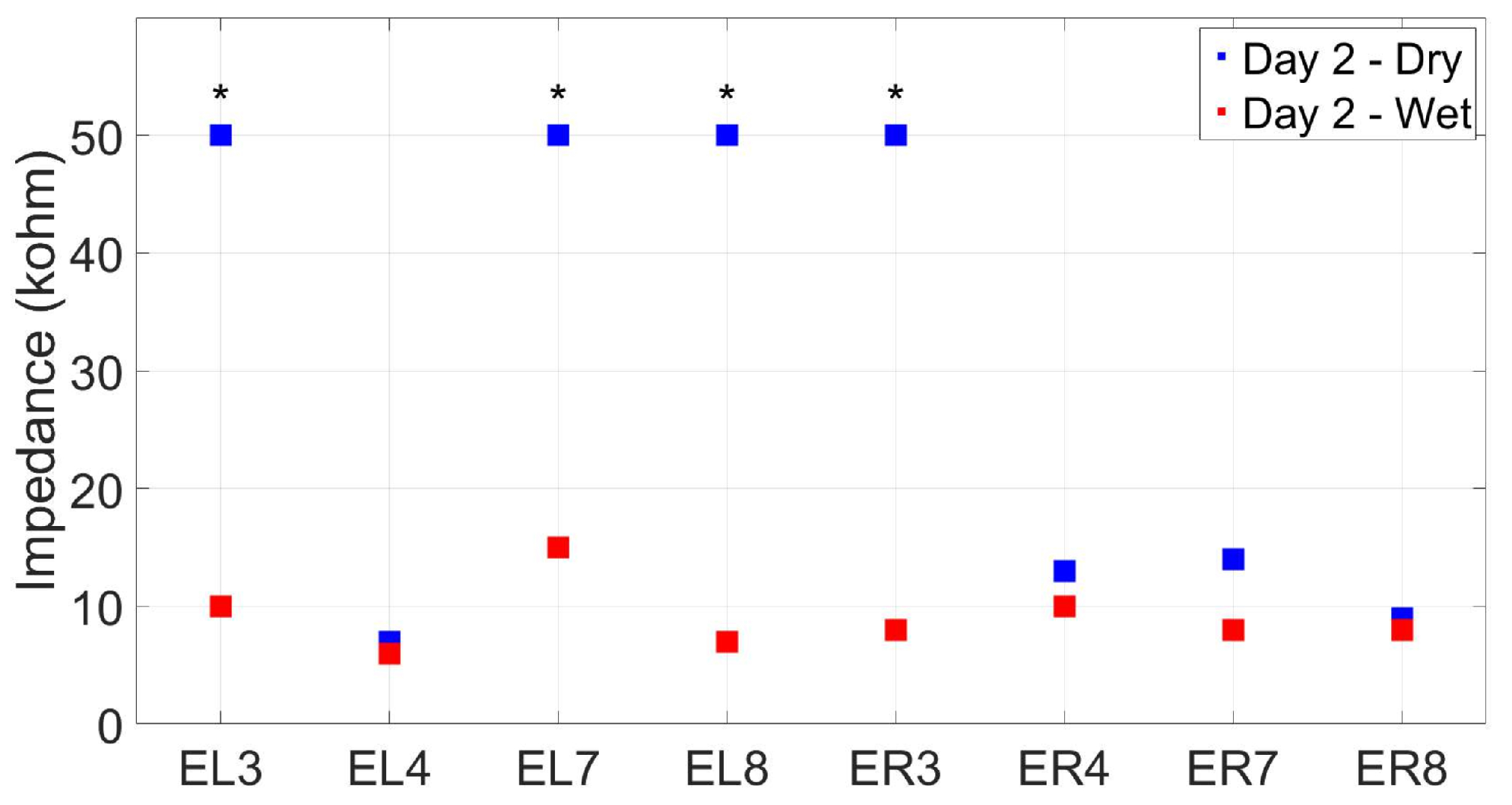
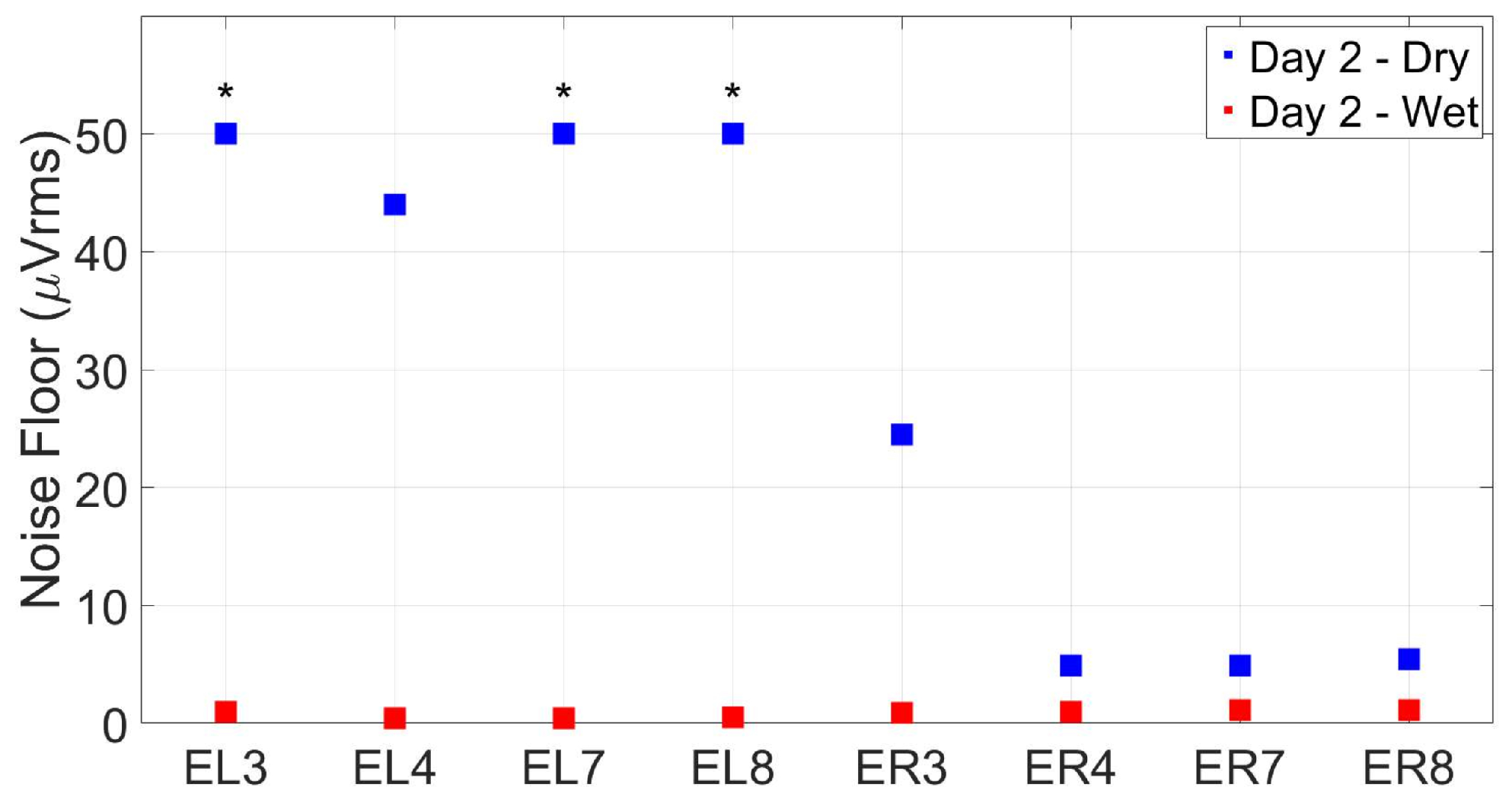
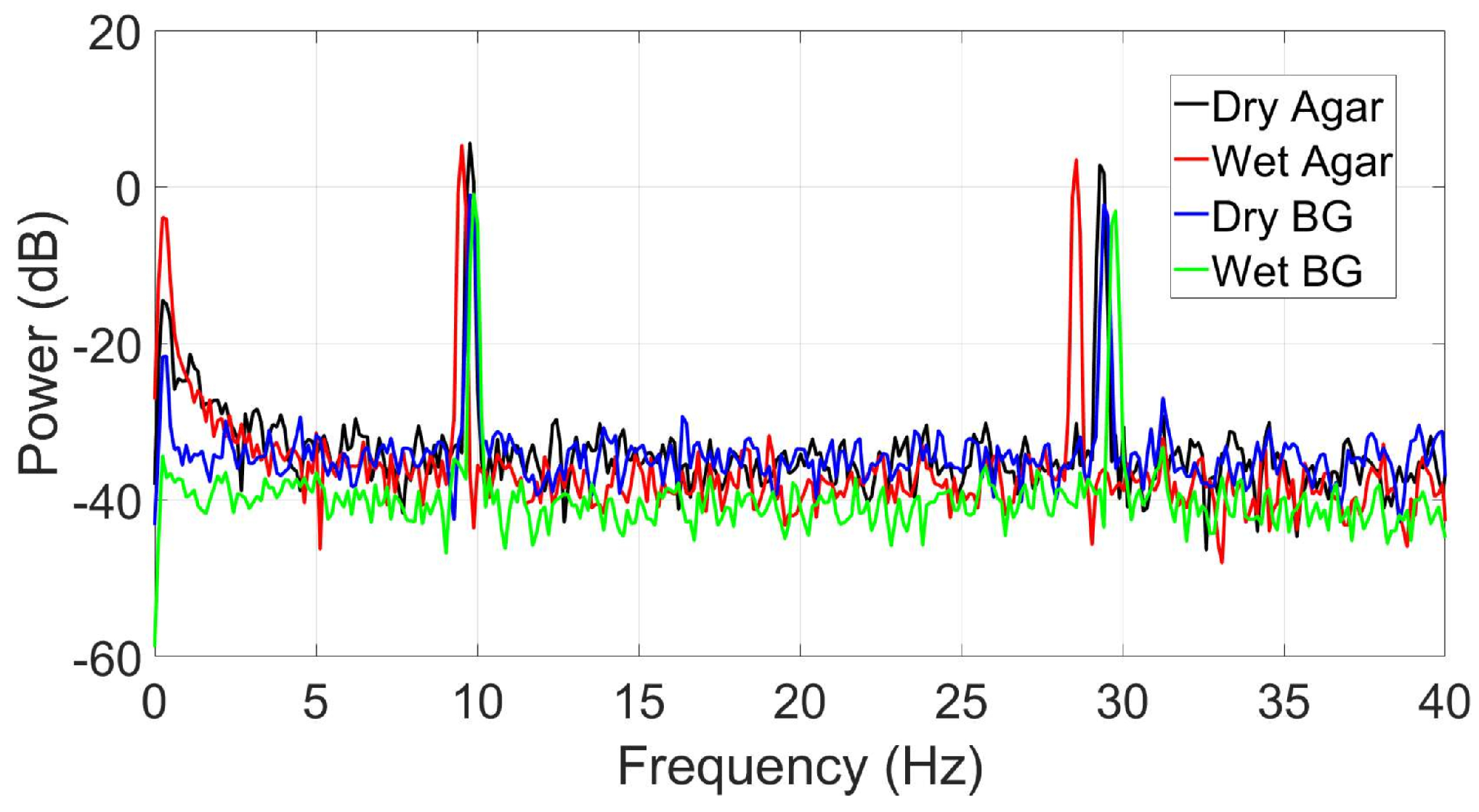

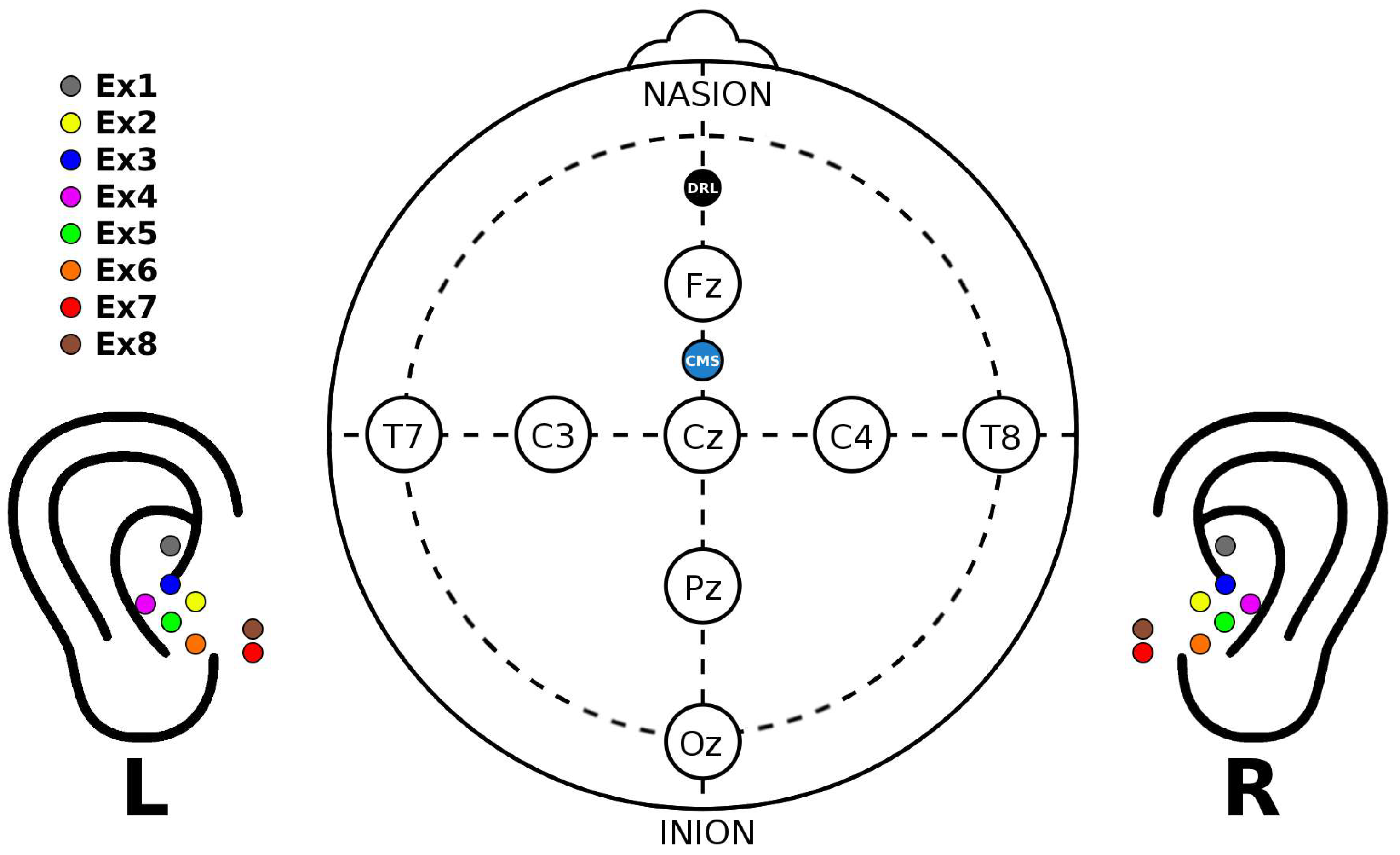


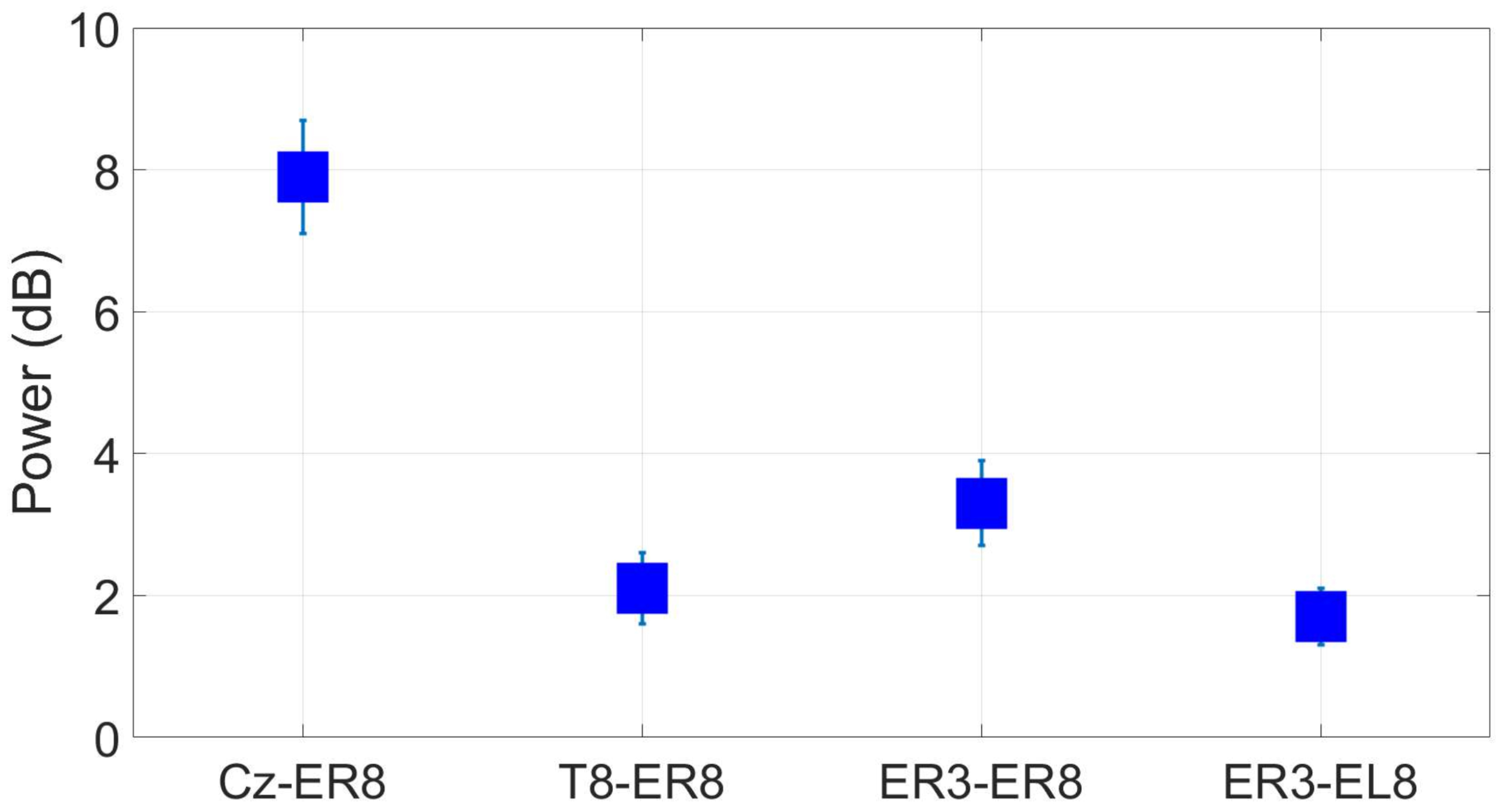
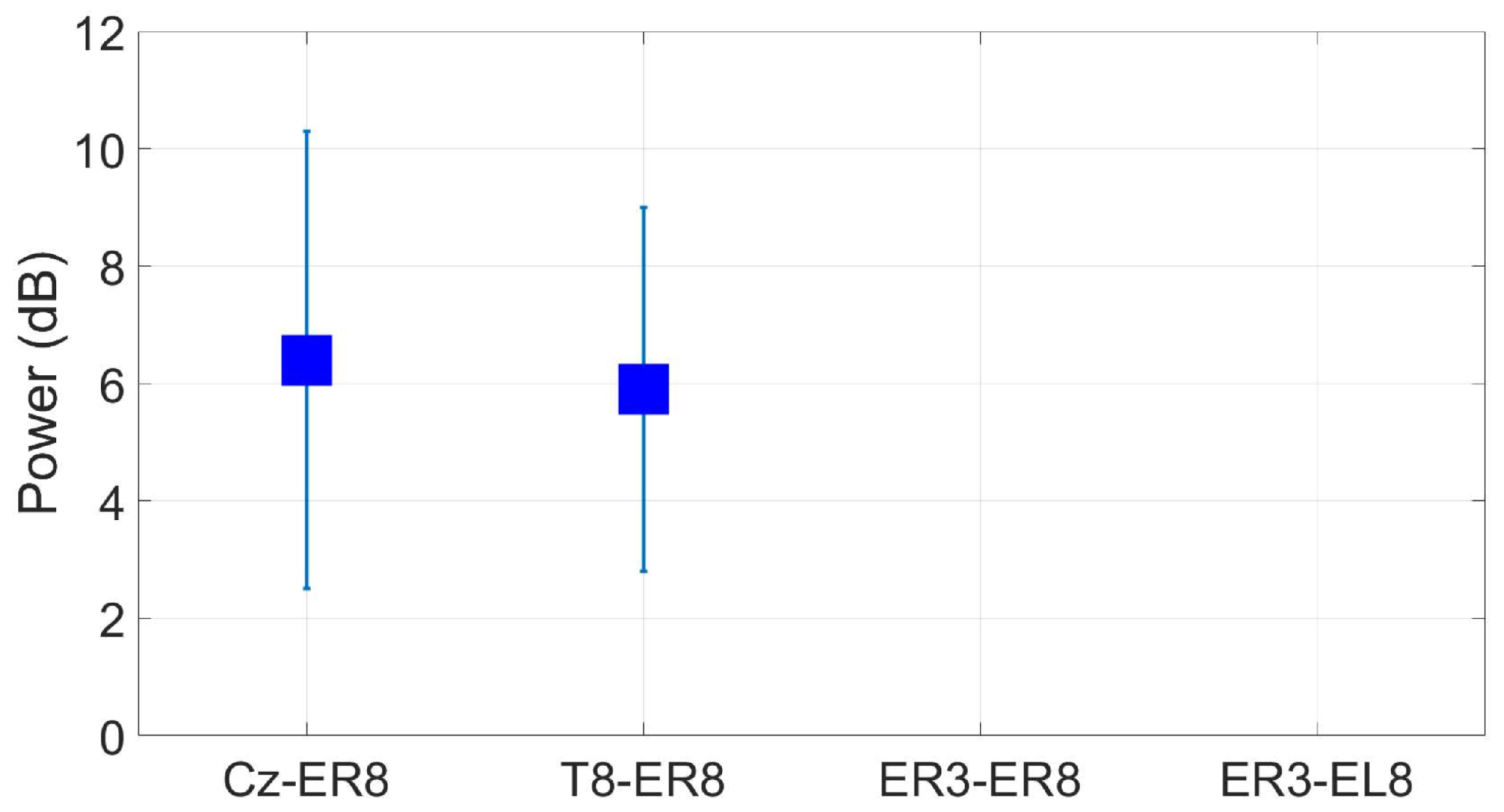

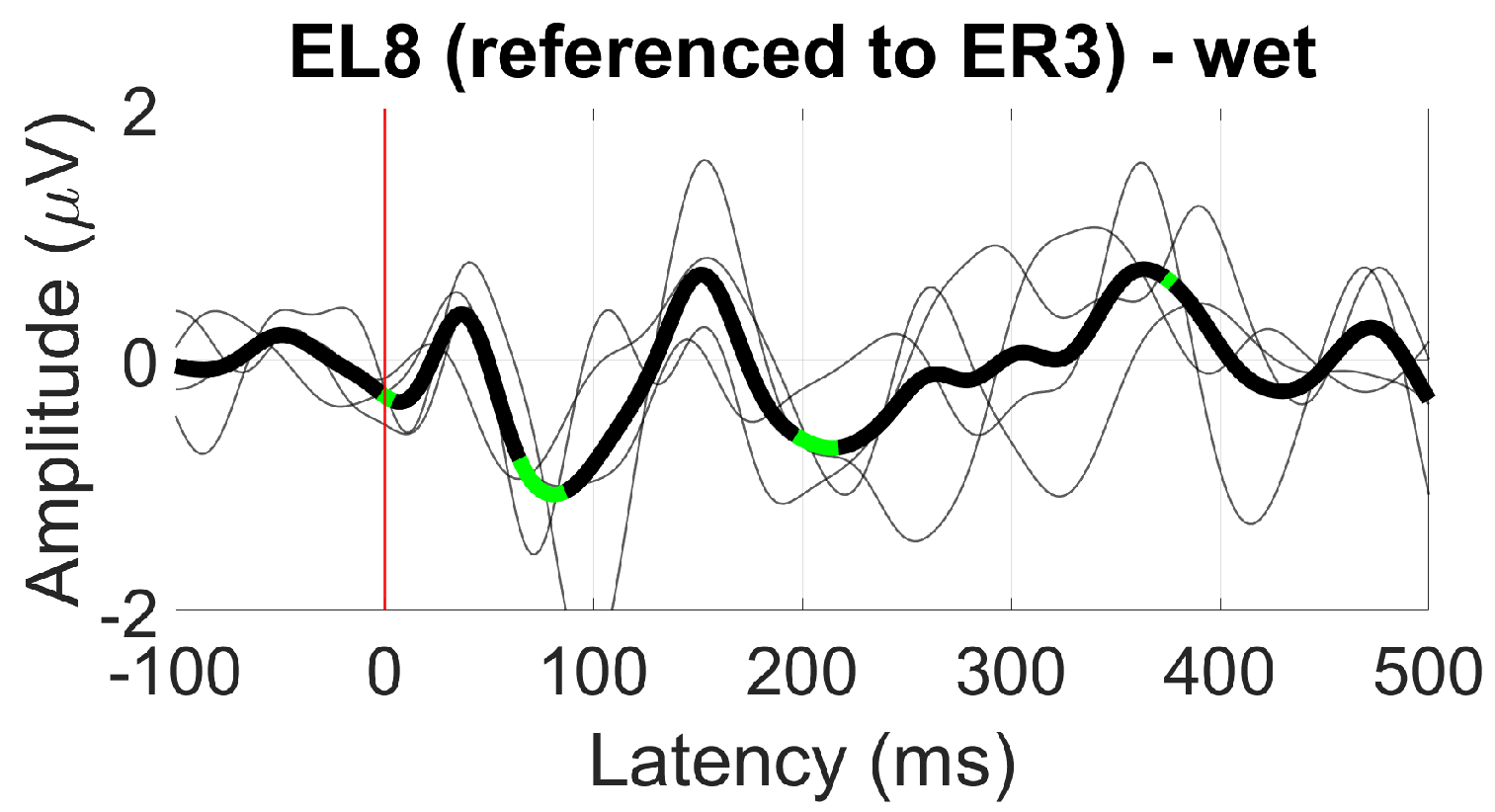

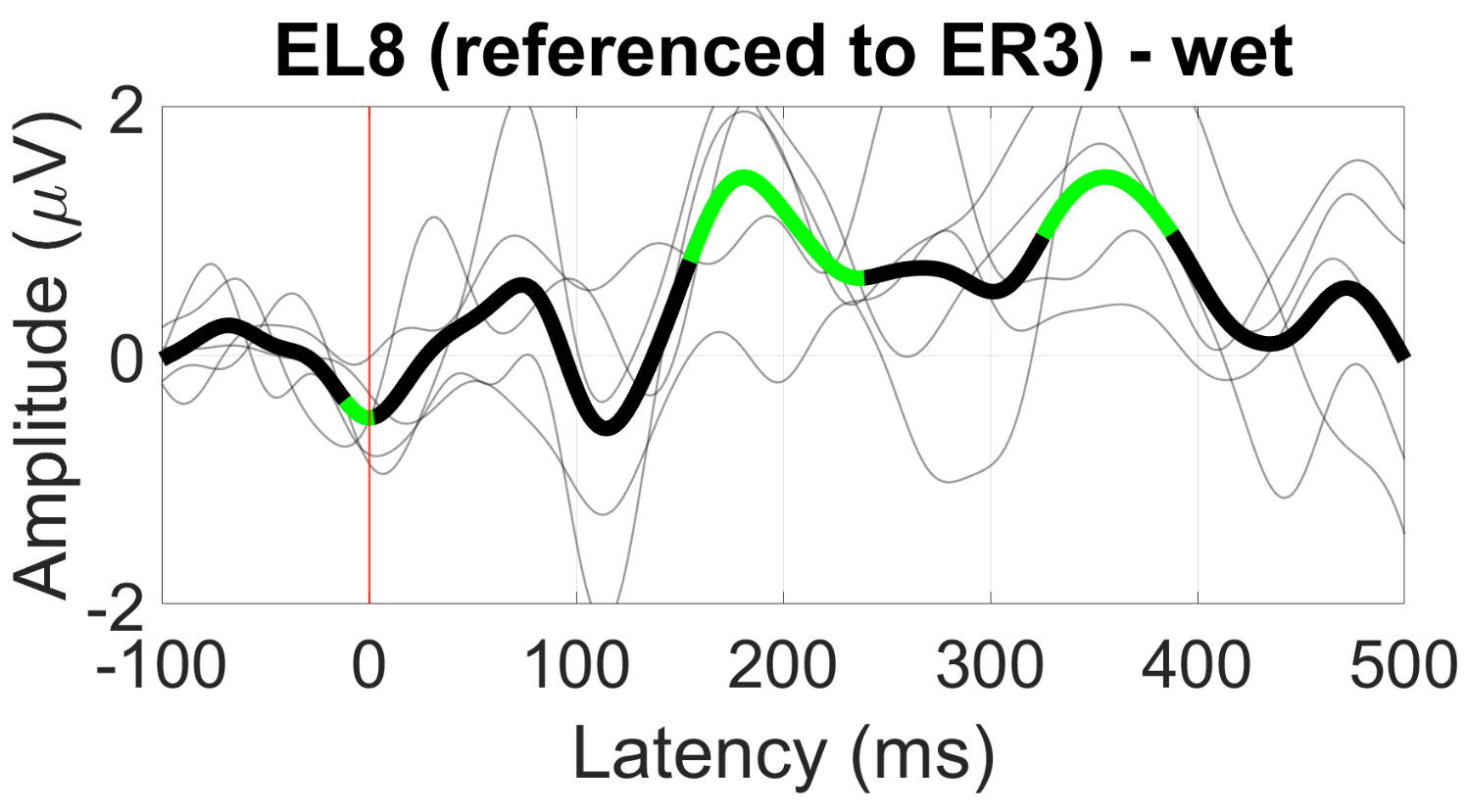






| Conductivity [S/m] | |
|---|---|
| Agar | 0.309 |
| BG | 0.918 |
| CF (1%) | 14.035 |
| Day 1 | Day 2 | Day 3 | Day 4 | |
|---|---|---|---|---|
| Agar | 855 | 851 | 850 | 845 |
| BG | 963 | 959 | 958 | 956 |
| Day 1 | Day 2 | Day 3 | Day 4 | |
|---|---|---|---|---|
| Agar | 44 | 40 | 40 | 36 |
| BG | 80 | 52 | 52 | 40 |
Disclaimer/Publisher’s Note: The statements, opinions and data contained in all publications are solely those of the individual author(s) and contributor(s) and not of MDPI and/or the editor(s). MDPI and/or the editor(s) disclaim responsibility for any injury to people or property resulting from any ideas, methods, instructions or products referred to in the content. |
© 2024 by the authors. Licensee MDPI, Basel, Switzerland. This article is an open access article distributed under the terms and conditions of the Creative Commons Attribution (CC BY) license (https://creativecommons.org/licenses/by/4.0/).
Share and Cite
Correia, G.; Crosse, M.J.; Lopez Valdes, A. Brain Wearables: Validation Toolkit for Ear-Level EEG Sensors. Sensors 2024, 24, 1226. https://doi.org/10.3390/s24041226
Correia G, Crosse MJ, Lopez Valdes A. Brain Wearables: Validation Toolkit for Ear-Level EEG Sensors. Sensors. 2024; 24(4):1226. https://doi.org/10.3390/s24041226
Chicago/Turabian StyleCorreia, Guilherme, Michael J. Crosse, and Alejandro Lopez Valdes. 2024. "Brain Wearables: Validation Toolkit for Ear-Level EEG Sensors" Sensors 24, no. 4: 1226. https://doi.org/10.3390/s24041226
APA StyleCorreia, G., Crosse, M. J., & Lopez Valdes, A. (2024). Brain Wearables: Validation Toolkit for Ear-Level EEG Sensors. Sensors, 24(4), 1226. https://doi.org/10.3390/s24041226





